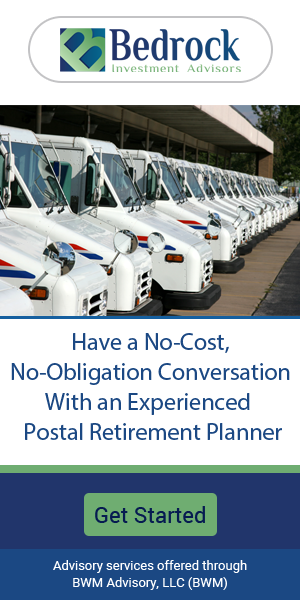Key Takeaways:
- Federal retirement policies and benefits have seen significant changes in 2024, impacting healthcare, pension plans, and Social Security.
- Staying informed is crucial for public sector workers nearing retirement to maximize benefits and plan effectively for the future.
Federal Employee News Highlights—The Updates You Can’t Afford to Ignore If You’re Close to Retirement
As 2024 progresses, federal employees face a landscape filled with changes and updates that could affect their retirement plans. From healthcare costs to Social Security contributions, understanding these updates is crucial for those approaching retirement. Staying informed helps ensure that you’re making the best financial decisions to secure a comfortable retirement.
The Rise in FEHB Premiums
- Also Read: Want to Leave Before 62? Here’s the Tradeoff Most Federal Workers Don’t Consider
- Also Read: 3 Ways CSRS Retirees Can Avoid Social Security Reductions Due to the Windfall Elimination Provision (WEP)
- Also Read: Your Next Federal Pay Raise Might Come With a Tradeoff—Here’s What to Watch
What This Means for You
Federal employees nearing retirement should explore the option of integrating FEHB with Medicare. By doing so, retirees can often reduce their healthcare costs while maintaining comprehensive coverage. The key is to assess your current health needs and financial situation to determine if this strategy is right for you.
Changes in TSP Contribution Limits
Another major update involves the Thrift Savings Plan (TSP). In 2024, the TSP contribution limit increased to $23,000, with an additional $7,500 available for catch-up contributions for employees aged 50 and above. These changes provide an opportunity for those close to retirement to boost their savings significantly.
Maximizing Your Contributions
Taking advantage of the increased contribution limits can lead to substantial growth in your retirement savings. If you’re approaching retirement, maximizing your TSP contributions—especially using catch-up options—can provide additional financial security and growth potential in the long term. This is a crucial step to consider if you want to maximize your wealth-building strategy before exiting the workforce.
Social Security: What’s New in 2024?
Social Security remains a cornerstone of retirement planning for federal employees under the Federal Employees Retirement System (FERS). In 2024, the taxable earnings limit increased to $168,600, and the maximum reduction due to the Windfall Elimination Provision (WEP) is now $498 per month for those with fewer than 30 years of substantial Social Security-covered work.
Strategic Claiming for Social Security
If you’re nearing retirement, consider your options for claiming Social Security benefits. The decision to claim benefits at age 62 may result in reduced payments, while delaying benefits until your full retirement age or later increases your monthly payout. Additionally, FERS employees may need to factor in the Special Retirement Supplement (SRS), which bridges the gap until Social Security eligibility. Strategic planning can help you optimize your benefits and mitigate the impact of any reductions due to WEP or other factors.
FERS Annuity Adjustments
Federal Employees Retirement System (FERS) annuities have seen adjustments in 2024, which may impact how employees plan their exit strategies. The average monthly annuity payout is now approximately $1,810. If you retire before age 62 under the Minimum Retirement Age (MRA) +10 option, you may face a reduction in your annuity.
Preparing for Early Retirement
For those considering early retirement, understanding how these adjustments affect your annuity is essential. Planning around the reduced benefits can involve strategies such as supplementing your income with other savings or delaying Social Security claims to maximize payouts. Evaluating these options carefully will help ensure that your retirement income remains sufficient despite these adjustments.
Postal Service Health Benefits (PSHB) Transition
One of the most talked-about changes for federal employees, particularly those in the postal service, is the transition to the Postal Service Health Benefits (PSHB) program. By 2025, USPS employees will shift from the traditional FEHB program to PSHB, a plan tailored specifically for postal workers. This change is significant as it alters the structure and availability of benefits for retirees from the postal service.
What USPS Employees Should Do Now
If you’re a postal worker nearing retirement, it’s crucial to understand how this transition will affect your benefits. Comparing the new PSHB options with your existing FEHB plan can help determine the best course of action. Consider speaking with a retirement advisor who specializes in federal benefits to make the most informed decision about your healthcare options as you approach retirement.
Federal Retirement’s Changing Landscape: Law Enforcement and Special Category Employees
Law Enforcement Officers (LEOs), Air Traffic Controllers, and other special category employees under FERS have access to unique retirement provisions, including earlier retirement ages and the Special Retirement Supplement. In 2024, the parameters for these benefits have been reviewed to ensure they align with the broader retirement policy updates.
Leveraging Special Retirement Benefits
If you fall into one of these special categories, understanding your retirement options is vital. The ability to retire earlier with access to the Special Retirement Supplement offers advantages, but careful planning is required to manage your finances effectively before Social Security benefits kick in. Staying up-to-date on the latest eligibility criteria and maximizing the available benefits ensures that you take full advantage of the opportunities specific to your category.
The Impact of Medicare Coordination for Federal Retirees
With the rising costs of healthcare, coordinating Medicare with FEHB has become a popular option for federal retirees. Medicare can offer substantial savings, particularly when paired with FEHB to fill coverage gaps. However, it’s important to enroll in Medicare Parts A and B when eligible to avoid penalties and to evaluate how it fits into your overall retirement plan.
Taking a Proactive Approach to Healthcare Costs
If you’re close to retirement, developing a strategy for managing healthcare costs is essential. This might involve enrolling in Medicare as soon as you become eligible and exploring the different coverage options available under the FEHB. Being proactive can reduce long-term healthcare expenses and ensure that you have a comprehensive plan tailored to your needs.
Focusing on Your Retirement Checklist
With so many changes in federal employee benefits, creating a comprehensive retirement checklist is more important than ever. This checklist should include a thorough review of your TSP contributions, FEHB and Medicare coordination options, and Social Security benefits analysis.
Why a Checklist Matters
Having a checklist ensures that you don’t overlook any crucial steps in your retirement planning. It also allows you to track deadlines for actions such as TSP catch-up contributions and Medicare enrollment, making your transition into retirement as smooth as possible. Federal employees who are well-prepared are better positioned to maximize their benefits and minimize any potential financial surprises.
Wrapping Up: Making the Most of Federal Retirement Benefits
Federal employees nearing retirement must remain informed about the latest changes affecting their benefits. From rising healthcare premiums to adjustments in TSP contribution limits, understanding these updates is essential for making strategic decisions. By staying engaged and proactive, you can navigate these changes successfully and secure a stable and comfortable retirement.












